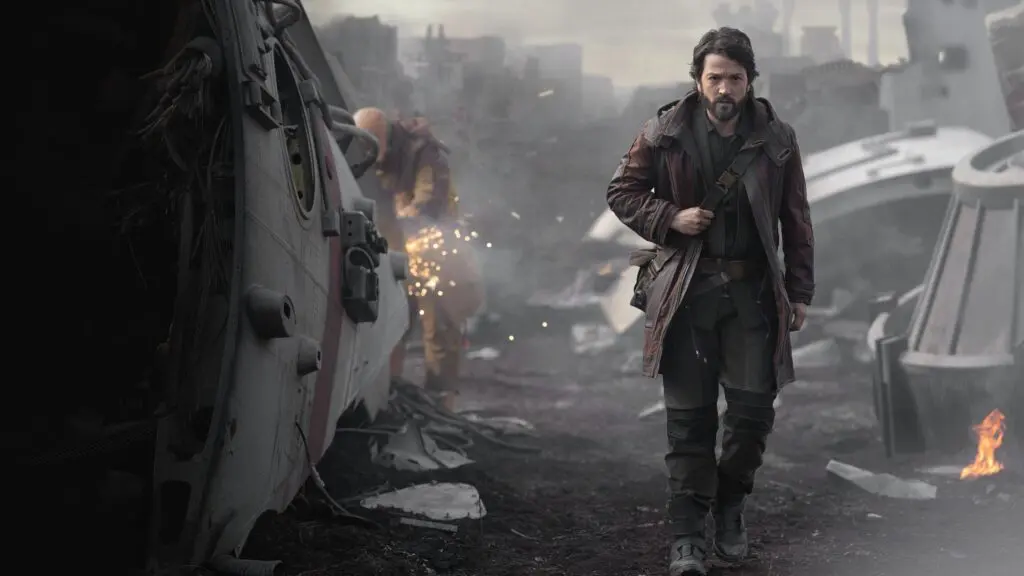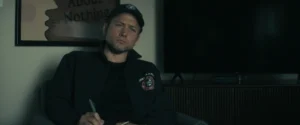Andor is a Star Wars show on Disney+, and it’s a highly engaging and well-written show, focusing on the state of the galaxy several years after the Empire takes over. It shows the development of the Rebellion, along with the journey of Cassian Andor.
But the critically acclaimed series is important for other reasons too. It brings politics back to the forefront of Star Wars storytelling and also bases some of its key ideas on concepts in Star Wars Legends. Neither of these is done with the heavy-handedness of previous Star Wars projects, such as The Mandalorian or The Book of Boba Fett. But what is the significance of Andor in Star Wars? Let’s dive in
The Importance of Andor
Andor is an important character in the Star Wars universe. In Rogue One, he and several other rebels flew to Scarif, where they were able to steal the plans for the Death Star and beam them to the rebel fleet in orbit. This is the Rebel Alliance’s first major victory against the Empire, and sets the conditions for more victories. Unfortunately, Andor dies during the mission as the Death Star fires on the Imperial base.
Andor is a pivotal figure in the Rebel Alliance, rising to the rank of captain in their intelligence network. He also took on the codename Fulcrum, which he uses to recruit rebels in the Albarrio sector. He is often accompanied by the reprogrammed Imperial droid K-2SO.
The show Andor is extremely important, as it helps show the buildup to Andor’s character, but also the Rebel Alliance. The first season has shown Andor developing from a selfish nobody to someone who helps inspire hope and leads an uprising in an Imperial prison. The second season will show the development of the Rebel Alliance, with the show moving faster through the timeline so the audience can see the changes. But without Cassian, the Rebel Alliance wouldn’t have succeeded.
Andor takes place at a very important time in Star Wars. The bulk of the first season is set five years before A New Hope and Rogue One, and Andor shows the start of what will eventually become the Rebel Alliance. The second season will explore the remaining four years and end right before Rogue One. Andor is set fourteen years after Revenge of the Sith.
The first season of Andor takes place in the same year as Star Wars: Rebels, which is a Star Wars animated show exploring similar things to Andor. The first season of Rebels largely takes place on the planet Lothal, but in later seasons expands its scope. Andor season 2 will also expand its scope and has the potential to cross over with Rebels, as it spans over the next four years. The event that makes this the most likely is Mon Mothma fleeing the Senate in 2 BBY, and meeting up with the Rebels crew, where she publicly declares open rebellion against the Empire.
There are two flashback sequences in Andor. The first one, which takes place in episodes 1, 2, and 3, shows a younger Andor and takes place before the start of the Clone Wars in 22 BBY, but a definite year hasn’t been stated yet. The second flashback sequence shows Imperial clone troopers marching down Rix Road on Ferrix. This takes place during the first year of the Empire, in 19 BBY.
The period between Revenge of the Sith and A New Hope has been well explored in both canon and Legends, but Andor proves there’s still much more to learn.
The Significance of Andor
Andor shows us what the early Rebel Alliance looks like, and the sorts of tactics they use to avoid the Imperials destroying them. It’s significant that Andor gives them a darker edge, with them being characterized by mistrust rather than the unity they display in the Original Trilogy. In Rogue One, Andor says that he’s done “terrible things on behalf of the Rebellion,” and Andor is showing us this.
Something else important that Andor is showing audiences is the bleakness of the Empire. They are coming off as competent and menacing in the show, with episode 9 in particular feeling especially oppressive. This is a more serious take on the Empire than in Rebels, where they are often treated as a joke, making the audience forget that this is a fascist, dictatorial government. But Andor makes the audience feel the hopelessness of the situation, which only makes the eventual triumph even more satisfying.
Finally, another significant part of Andor is the social and political commentary. Politics is a core part of the show, whether the audience is watching the dinner parties of politicians in Mon Mothma’s apartment or the development of a revolutionary ideology in the dirt. A top-down and bottom-up perspective of the Rebellion and Empire gives us a more rounded view of the conflict. But Andor also features commentary on our own world, offering a look into a damning mirror.
The Andor series is a prequel to Rogue One, and tells the story of how Cassian changes from a selfish lowlife to someone who becomes selfless and willing to sacrifice themselves for a greater cause.
Star Wars films and TV shows often pull storylines from Legends, like Grand Admiral Thrawn or the resurrection of Emperor Palpatine. Andor isn’t based on anything directly and instead acts as a retelling of the formation of the Rebel Alliance. In Legends, this story was told in the video game The Force Unleashed, with Starkiller meeting Leia Organa, Bail Organa, Mon Mothma, and Garm Bel Iblis on Corellia, to form the Rebel Alliance.
Andor changes this. The series isn’t based on a direct story from Legends but references several.
The Preox-Morlana Corporate Zone, introduced in episode 1 of Andor, brings back a concept from Legends. In 1979 and 1980, three Han Solo prequel novels were published, titled Han Solo at Stars’ End, Han Solo’s Revenge, and Han Solo and the Lost Legacy. To avoid conflicting with A New Hope, the novels are set in the Corporate Sector, a part of the galaxy run by corporations. They are an important part of the prequels, with the Separatists containing several corporations.
In the third episode, we see that the Preox-Morlana security force gets from orbit to atmosphere in mobile tac-pods. These bear a striking resemblance to LAAT/i Republic gunships, with a more imperialized look. In Legends, the Empire replaces Republic gunships with the Imperial Dropship Transport, but these haven’t appeared in a canon story. It seems that the concept has been replaced with the Imperial troop transport, seen in episode 8, but also in Obi-Wan Kenobi and The Mandalorian.
In episode 4, Luthen Rael gives Cassian a Kyber Crystal necklace and tells him that it is used to celebrate the uprising against the Rakatan invaders. The species are part of the Old Republic era in Legends and used to control an Empire themselves called the Infinite Empire. This empire is toppled long before the events of the Knights of the Old Republic video games, where Revan and Malak find the remnants of the Rakata species.
In the same conversation. Andor reveals that he fought in the Battle of Mimban. The planet was created for the 1978 Legends novel Splinter of the Mind’s Eye, where Luke and Leia try to find a Kyber Crystal on the planet. The planet is referenced in an early episode of Star Wars: The Clone Wars, and the Battle of Mimban happens in 2017’s Solo: A Star Wars Story, where Han Solo fights on the planet.
Mon Mothma’s daughter, Lieda Mothma, is introduced in episode 5 and has popped up in many Legends projects. First appearing in the 1993 West End Games Dark Empire Sourcebook, she also appeared in the 2002 reference book The New Essential Guide to Characters and the 2008 The Complete Star Wars Encyclopaedia Vol. II. Lieda is the only person to see how much Mon’s service to the Rebel Alliance would affect her. When Mon Mothma retired on Coruscant Lieda went with her, and stayed with her Mon her death.
Tunqstoid steel appears in episode 8 and is what the prisons on Narkina 5 are made out of. The metal is a superb conductor and has its origins in Legends. It appears in the 2009 novel Fate of the Jedi: Abyss, where it’s part of Detention Centre 81.
The Cantwell-class Arrestor cruiser appears in episode 11, is based on the designs of Colin Cantwell. He pitched the idea to George Lucas to be used in A New Hope, but Lucas opted for a different design for the Imperial-class Star Destroyer. It hasn’t appeared in Legends stories. The cruiser does appear in a deleted scene of Solo: A Star Wars Story, and in a propaganda video in the full film.
Read More: What Planet was the Death Star Above in the Andor Season 1 Finale?




